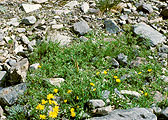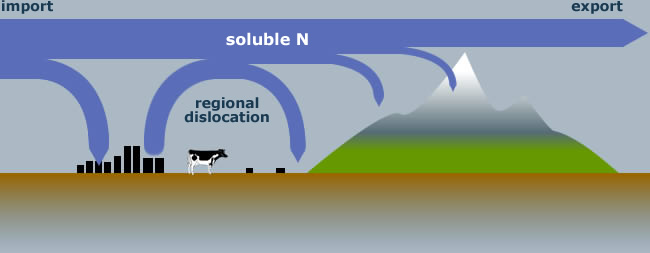 |
|
|
|
|
|
|
Though less evenly distributed over the globe than CO2 enrichment, the atmosphere is heavily loaded with soluble nitrogen compounds in certain regions. Sources are for the most part:
The natural background soluble N-input into alpine ecosystems (from lightning, volcanism, wild fires) would be somewhere between 1-2 kg N ha-1 a-1. During the last few decades, the anthropogenic input has reached values between 3 and 12 kg N ha-1 a-1 in certain regions (e.g. the Alps, parts of the Rocky Mts., E-China). For comparison: lowland rates of N-input may be as high as 40 kg N ha-1 a-1 in densely populated areas and fertiliser application in intense agriculture ranges from 100-400 kg N ha-1 a-1.) Though small in absolute terms, the current rates of N-deposition represent a massive change in the diet of alpine plants and will favour fast growing species, grasses in particular, to the potential disadvantage of other species. Accumulating in snow over 6-9 months, a heavy load of soluble N becomes available to alpine plants at snowmelt in seasonal climates. It is expected that N-deposition in exposed regions has greater ecological effects than atmospheric CO2-enrichment and/or warming temperatures alone. |
1 - Simulation of N-deposition in a glacier forefield at 2500 m in the Alps. |
|
2 - Frontal ranges are affected more than central or lee ranges. |
29 August 2011 |
||
| |
||

